
Content
top
- PTCDA -
prototypic organic material
short stacking distance
large PI-overlap between stack neighbours
grows on most substrates in rather well-ordered films
absorbs in the visible
- Even though PTCDA films have been investigated for more than 10 years, the knowledge about absorption, relaxation and recombination processes in PTCDA crystals and films is still rather limited
top
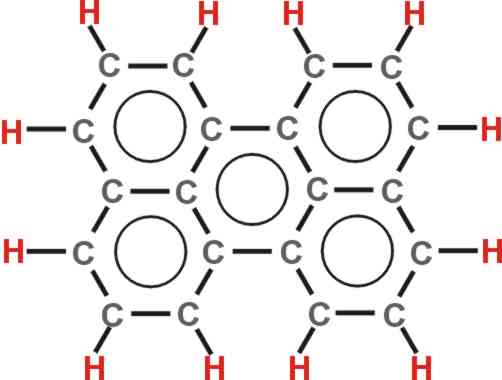
The structure of PTCDA: 3,4,9,10,-Perylene TetraCarboxylic DiAnhydride (C24H8O6)

The structure of PTCDA crystals
- Monoclinic structure
- C2h symmetry space group
- 2 molecules per unit cell
- alpha- and beta- phases
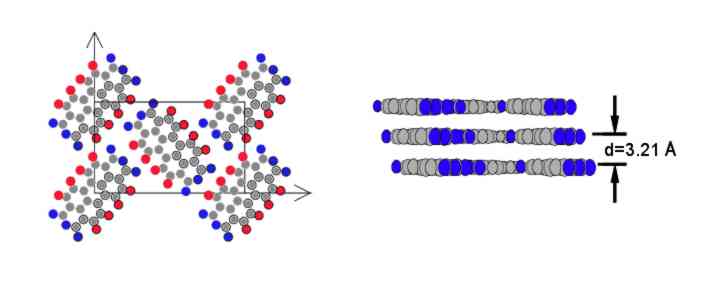
top
- Optical HOMO-LUMO gap: E00 ~ 2.5 eV
- Distribution of the overlap charges
- delocalized transition dipole moment
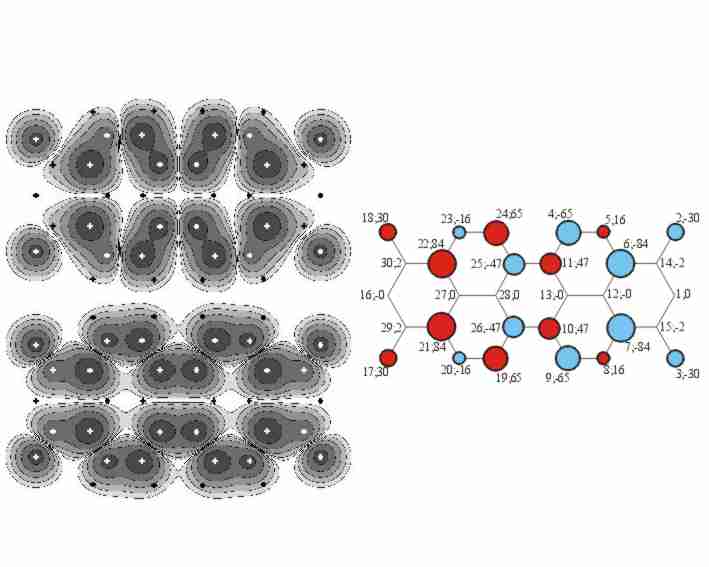
Optical cycle of a single molecule
- Deformation of the molecule
during excitation
- Pronounced vibrational structure
- Displaced harmonic oscillator
- Absorption: Poisson-distribution over
vibronic sublevels
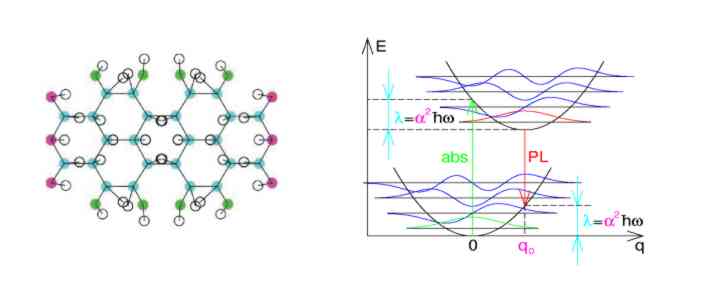
Absorption and recombination
on a single PTCDA molecule
- Small Stokes shift:
E(stokes) = E(abs) - E(PL)
E(average,abs) - E(average,PL) = 2 lambda
- Reduction of exciton-phonon coupling constant
alpha^2 = 1.18 - calculated
alpha^2 = 0.77 - influence of solvent

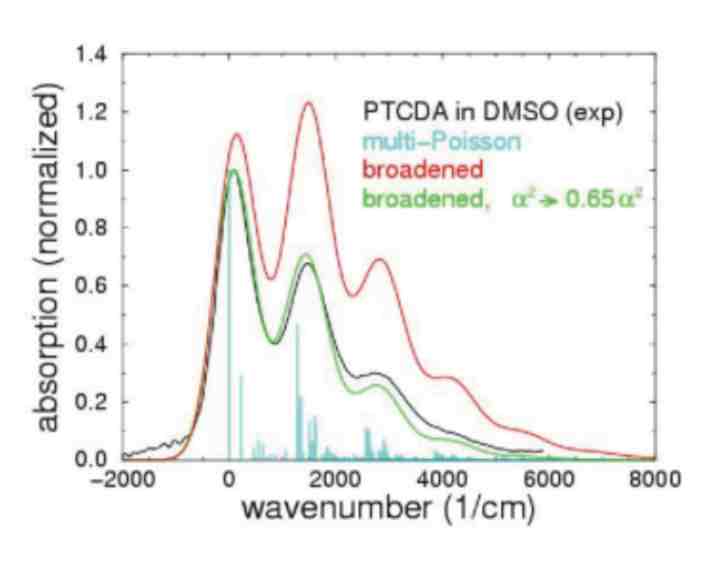
top
- Deformation of the absorption lineshape ; Large Stokes shift
- No symmetry absorption - photoluminescence
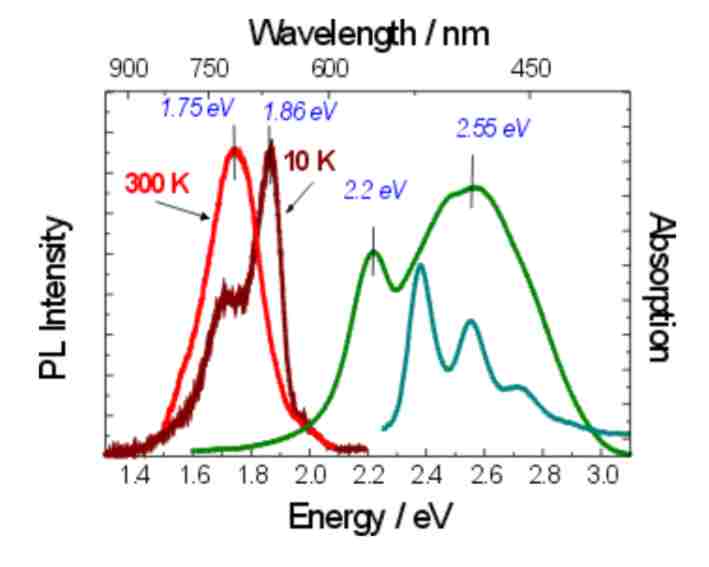
Frenkel exciton: related models
- dimer model, Frenkel and CT excitons:
Z. G. Soos, M. H. Hennessy, and G. Wen, Chem. Phys. 227, 19 (1998)
- single 1-dim stack, Frenkel and CT excitons:
M. Hoffmann, K. Schmidt, T. Fritz, T. Hasche, V.M. Agranovich, and K. Leo,
Chem. Phys. 258, 73 (2000)
- two molecules per unit cell, only Frenkel exciton:
absorption: I. Vragovic, R. Scholz, M. Schreiber, Europhys. Lett. 57, 288 (2002)
photoluminescence: R. Scholz, I. Vragovic, A. Yu. Kobitski, M. Schreiber,
H.-P. Wagner, and D.R.T. Zahn, phys. stat. sol. (b) 234, 402 (2002)
- Frenkel and CT excitons, spreading of vibronic cloud:
M. Hoffmann and Z.G. Soos, Phys. Rev. B 66, 024305 (2002)
- Frenkel and CT excitons, applied to electro-absorption:
G. Mazur, P. Petelenz, and M. Slawik, J. Chem. Phys. 118, 1423 (2003)
International School of Physics "Enrico Fermi" CXLIX
Organic Nanostructures: Science and Application

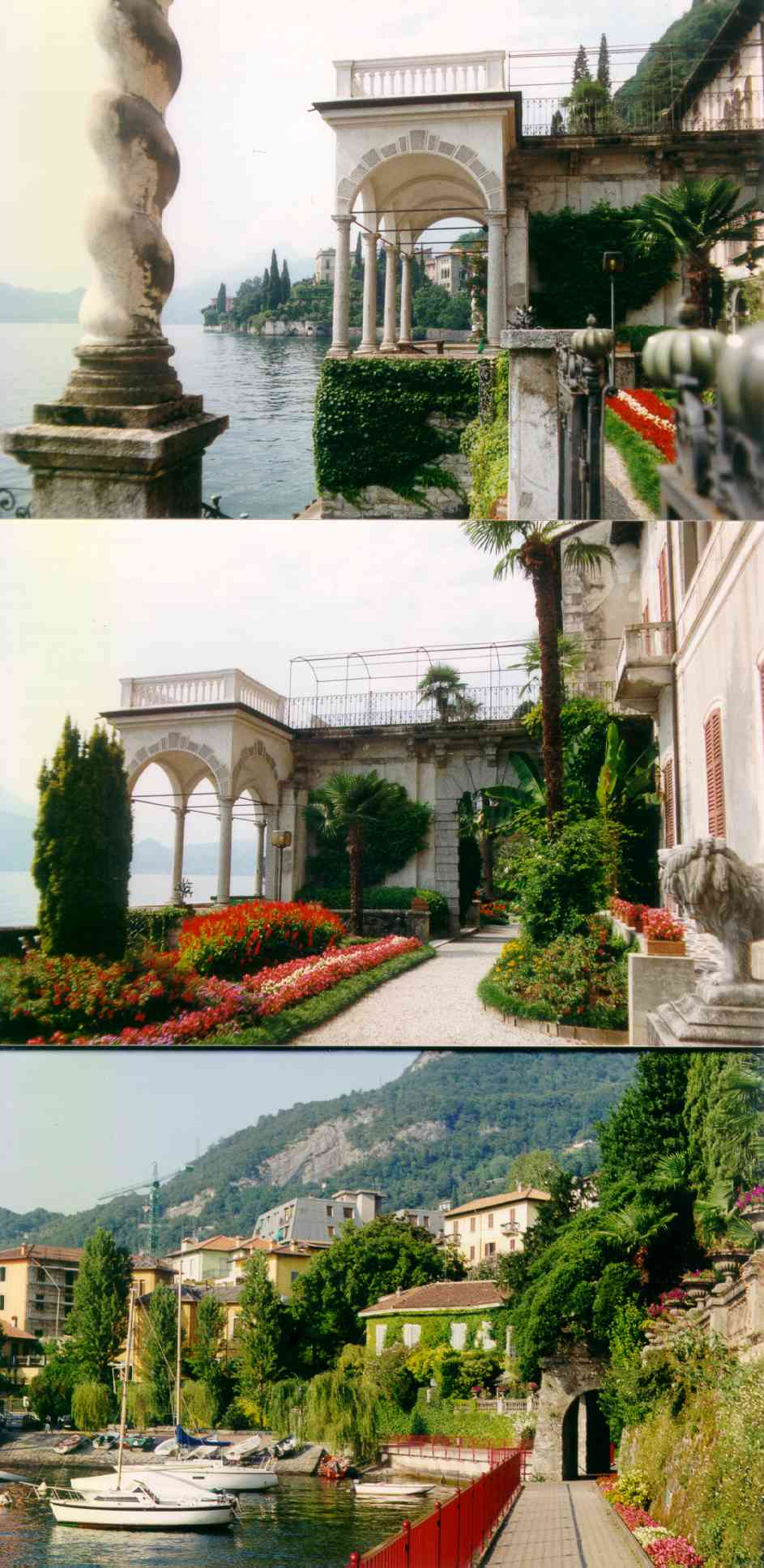
top
- The electronic ground state:

- The vibronicaly and electronicaly excited state:

- The Frenkel exciton model Hamiltonian:

- Decomposition of the transfer matrix element into an electronic and vibronic part:

- The Fourier transformation into wavevector representation:


Block Structure of the Hamiltonian

- diagonal blocks - deformed lineshape:
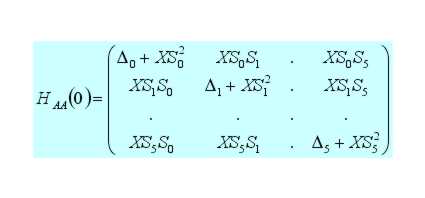
- off-diagonal blocks - Davydov splitting:
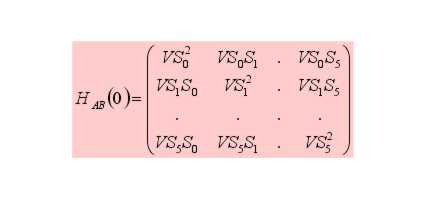
- rotation into basis of Davydov components:
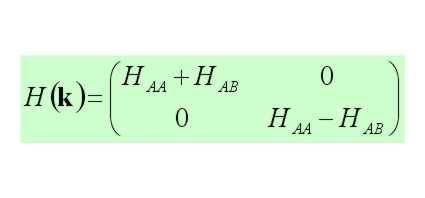
Exciton Transfer Energies
- point-dipole approximation:

- delocalized nature of transition dipole:

- Interaction between atomic distributions of overlap charges in an anisotropic dielectric medium:

Calculation
unscreened - blue
screened - red
point-dipole approximation - green

exciton transfer energy between equivalent molecules,
excluding stack neighbours
M(e)= -13 meV
exciton transfer energy between stack neighbours
(screened, unscreened, fit)
W(e)= 21 meV
W(1)= 94 meV
W(fit)= 82 meV
exciton transfer energy between equivalent molecules (fit)
X(fit)= 150 meV
exciton transfer energy between non-equivalent molecules
(screened, fit)
V(e)= 34 meV
V(fit)= 47 meV
top
- The frequency-dependent dielectric tensor:

- Kramers-Kronig consistent lineshape based on Gaussian broadenings
- Shift of spectral weight to higher energies for increased transfer between equivalent molecules (X):

- Splitting into two Davydov components for non-zero transfer between non-equivalent molecules (V):

Refractive Index
- Real and imaginary part of the refractive index:

- Anisotropy of dielectric tensor:
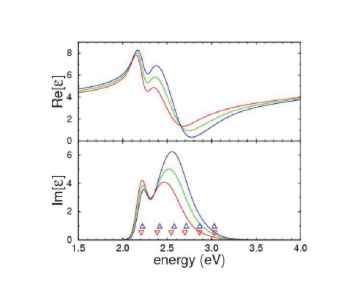
- Model parameters:
transition dipole moment, d = 6.45 Debye
exciton-phonon coupling constant, alpha^2 = 1.0
maximum number of vibrational sublevels, n(max) = 5
effective vibrational mode: 0.17 eV
exciton on-site energy, E(00) + D = 2.180 eV
transfer energy between equivalent molecules, X(0) = 150 meV
transfer energy between non-equivalent molecules, V(0) = 47 meV
background strenght = 2.38
background energy = 7.5 eV
static dielectric constant, e(in-plane) = 4.07
Multi-Mode Model
- several nondegenerate vibrational modes:

- a single effective mode is a valid approximation if the dominant contribution to the deformation of the relaxed
excited molecule arises from two nearly degenerate modes.
Vibronic Cloud Model
- delocalization of vibronic excitation
around electronically excited molecule:

- interpretation of the increased broadening of the absorption lineshape at higher energies requires extended clouds with radius beyond the nearest stack neighbour.
top
- Dispersion for three characteristic directions in k-space
- „negative“ dispersion has origin in the dominating positive exciton transfer energy between the nearest stack neighbours (W)
- minimum at (0,0,p) - a possible origin of the red-shifted photoluminescence
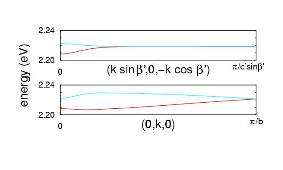

Electron Energy Loss Spectroscopy
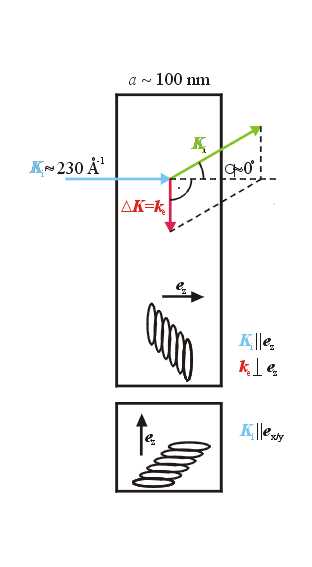
- Inelastic scattering of electrons and creation of an optical excitation.
- Shift of the loss function towards lower energies for momentum orthogonal to the plane of molecules.

top
- Time-resolved PL measurements on single crystals of alpha-PTCDA at low temperatue T = 11 K
- a component with Tm is interpreted as Frenkel excitons a component with Ts is a composition of charge-transfer exciton bands at around 1.79 eV and 1.66 eV.
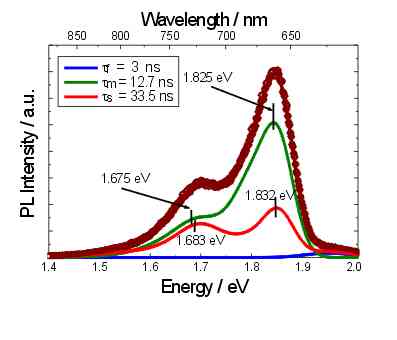
Frenkel excitons: optical cycle
- Optical absorption,
- Relaxation towards the edge of the Brillouin zone,
- PL recombination.
- total Stokes shift: 0.43 eV (exp: 0.41 eV).

PL model Hamiltonian:
Hamiltonian for final states after de-excitation from the lowest branch of exciton dispersion

Coupling Strengths:
- Reduction of the available coupling strengths
- Slowing down of the PL decay rate with respect to the monomer

Radiative Decay Rates and PL Lineshape
- Asymmetric lineshape is modelled by a Poisson distribution of an effective mode of 30 meV with g^2=2.
- Reduction of the energetic difference between vibrational subbands ~ 0.16 eV
- Resulting radiative decay times (12.6 ns and 13 ns) coincide with the measured value within the experimental uncertainty
(12.7 pm 0.4 ns).
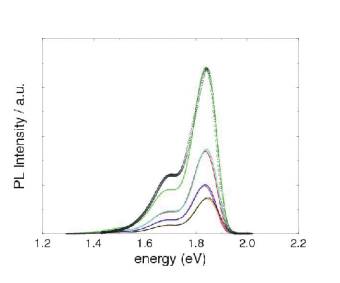
Frenkel excitons: lineshapes

top
Quantum confinement:
- finite film thicknesses: 1 – 10 ML
- partial spatial Fourier transformation
- energy spectra is strictly discrete
- finite number of allowed kz values
- the importance of the surface conditions
- non-perturbed (ideal) films: E(bulk) = 2.18 eV
- perturbed films: E(1ML) = 2.30 eV;
E(surf) = 2.24 eV and E(bulk) = 2.18 eV
- appearance of localized surface states
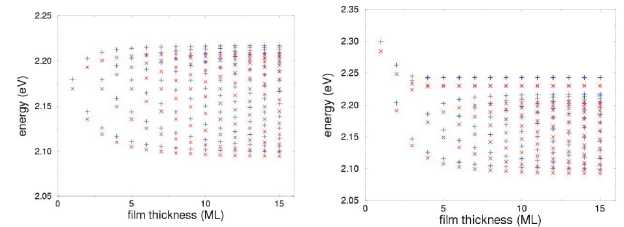
- Bulk-like states have envelopes resembling states in a quantum well
- Appearance of localized surface states outside the range of bulk energies

- Bulk-like states delocalized over the entire film
- Appearance of localized states at symmetrically perturbed surfaces
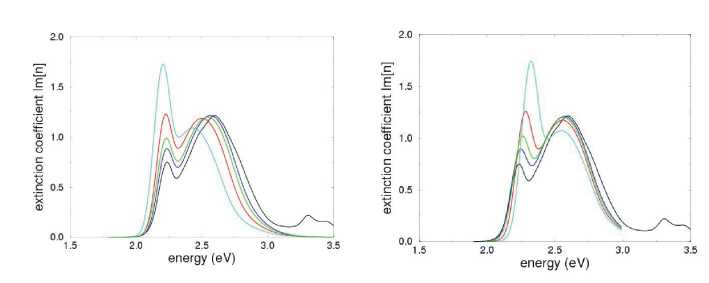
- Non-perturbed film: energy shift to the red
- Perturbed film: energy shift to the blue
top
The electro-absorption response of Frenkel exciton system follows the first derivative of the absorption curve with respect to energy
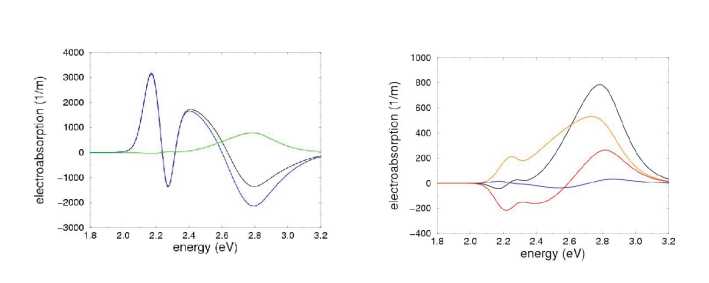
The experimentaly measured electro-absorption lineshape corresponds to the second derivative of the absorption curve:
- indication of possible contribution of Charge-Transfer excitons
top
Optical Absorption:
- Influence of the exciton transfer between different molecules onto the deformation of an effective vibrational mode
- Quantitative interpretation of the frequency-dependent dielectric tensor and the complex index of refraction
- Anisotropy of optical properties – Davydov splitting
Exciton Dispersion:
- Computed for three characteristic directions in k-space
- Strong “negative” dispersion for direction orthogonal to the plane of molecules – minimum at the boundary of Brillouin zone
- Interpretation of the red-shift of the EEL function
Photoluminescence:
- Origin: the low-lying excited states around the minimum of the lowest branch of the Frenkel exciton dispersion
- Interpretation of the large Stokes shift of crystalline samples
- PL lineshape, energetic positions and radiative decay times are in good agreement with the experiment
Ultrathin Films:
- Quantum confinement: discretization of the exciton energy spectra
- Appearance of localized surface states
- Interpretation of the observed blue-shift of the optical absorption
Electro-absorption:
- Follows the first derivative of the absorption curve
- Limitation of the pure Frenkel exciton model:
possible contribution of Charge-Transfer excitons


















































